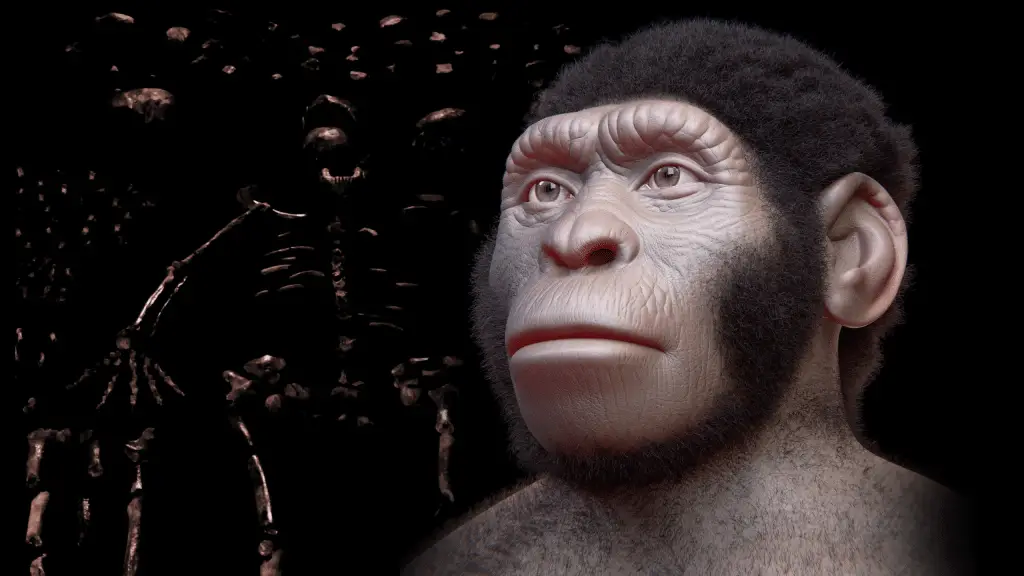The discovery of theMan naledi has generated considerable interest and debate in the scientific community and beyond. This ancient human relative, discovered in the cave system Rising Star in South Africaexhibited unique characteristics that challenged our understanding of human evolution.
About that, recentlya series of research has called into question some of the more controversial claims regarding Homo naledi, particularly those relating to the burial of the dead and the creation of symbolic carvings.
In 2013, a group of speleologists discovered approximately 1,500 Fossil Bones Belonging to a New Human Species – later named Homo naledi –, dating back to around 300,000 years agorevealing a combination of modern and archaic features.
The hands, feet and wrists of Homo naledi were similar to those of human beings. modern humans and Neanderthalswhile the upper body and brain size more closely resembled pre-human species such as australopithecines.
This discovery has raised crucial questions about where Homo naledi fits into the human evolutionary treewith some researchers suggesting that the remains found so deep in the cave system were intentionally placed there by other members of the speciesimplying human-like behavior.
That said, these interpretations have been the subject of debate, with some scholars speculating that the remains may have been transported into the cave system by natural events or that the individuals ventured into the caves to die.
Recent research has further complicated the picture, with some scholars arguing that Homo naledi not only intentionally placed bodies in caves, but also buried some remains in shallow graves. These claims, if confirmed, could revolutionize our understanding of the development of human belief, culture and symbolism.
New discoveries about Homo naledi and the related controversies
Recent research on Homo naledi has brought to light some surprising claims about the cognitive abilities and the cultural behaviors of this species, and three new studiespublished as a preprint awaiting peer review, argue that Homo naledi not only intentionally buried their dead, but also created symbolic carvings on rocks.
These claims, if confirmed, could revolutionize our understanding of the cognitive and cultural capabilities of hominins with smaller brains.

One of the most controversial aspects of the new research concerns the claim that Homo naledi intentionally buried his dead. So far, the oldest and most reliable evidence of intentional burial in Africa comes from the site of Panga ya Saidi in Kenyadated to approximately 78,000 years ago and associated with theHomo sapiens.
If the claims about Homo naledi are true, they would push back the evidence for advanced funerary behaviors in Africa by about 160,000 years, suggesting that such practices were not limited to our species or other hominins with larger brains.
However, the scientific community is divided on these claims, with some researchers arguing that the evidence presented so far are not sufficient to confirm intentional burial. By the standards set by the paleoanthropological community, the current evidence does not meet the rigorous criteria needed to identify an intentional burial, for example it was not found no clear signs of deliberately dug pits.
Symbolic engravings
Another significant claim concerns the creation of symbolic carvings by Homo naledi, if confirmed, this discovery would suggest that Homo naledi possessed advanced cognitive abilities, similar to those of modern humans. Symbolic carvings are generally associated with complex cognitive behaviors and the ability to attribute symbolic meanings to objects and environments.
Again, the evidence is debated. Some scholars believe the carvings could be the result of natural processes or unintentional human activity. The lack of hard evidence makes it difficult to draw firm conclusions about these claims.

Implications for Human Evolution
If the claims about Homo naledi are confirmed, they would have profound implications for our understanding of human evolution. First, they would suggest that advanced cognitive abilities and symbolic behaviors were not limited to hominins with larger brains, such as Homo sapiens and Neanderthals. This would imply that brain size may not be the sole determinant of the development of complex and symbolic behaviors.
Second, the findings about Homo naledi may force us to reconsider our assumptions about the evolution of human cultural beliefs and practices. If Homo naledi intentionally buried their dead and created symbolic carvings, it suggests that such behaviors may have emerged independently in different hominin lineages.
If you are attracted by science or technology, keep following us, so you don’t miss the latest news and updates from around the world!
#Homo #naledi #Discoveries #Human #Evolution